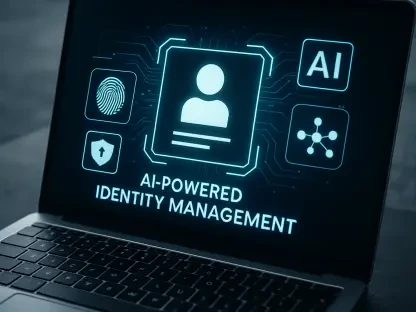Behind the Digital Curtain: Understanding the Landscape of Cybersecurity Mishaps
In an era dominated by digital interconnectivity, cybersecurity mishaps have become increasingly complex and significant. These incidents often unveil the hidden and multifaceted dynamics influencing digital safety in both government and corporate spheres. Cybersecurity is crucial for maintaining the integrity of governmental operations and corporate security. This roundup aims to provide expert insights and dive deep into some of the most noteworthy cybersecurity lapses, discussing their repercussions across various sectors.
The Ripple Effect of Human Error in High-Stakes Environments
Missteps in the US Election Campaign: A Lesson in Oversight
The unintentional disclosure of Jeffrey Goldberg’s phone number in a Signal group chat is a case study in oversight. This incident stemmed from an error by National Security Adviser Mike Waltz, who mistook Goldberg’s number for a campaign staffer’s. Months later, Goldberg was mistakenly added to a sensitive group chat, illustrating the dangers of human error in high-stakes environments. Experts note that such errors highlight urgent needs for stringent checks and training to prevent sensitive information from being mishandled. These breaches stress the necessity for meticulous communication practices, particularly during election campaigns where stakes are high.
Beyond Election Day: Continuing Vulnerabilities in Sensitive Government Communications
Ongoing issues within the US National Security Council, particularly regarding the use of the Signal app, reflect broader communication vulnerabilities. Investigations have revealed that non-governmental communication channels were often used for sensitive discussions, raising concerns about official record-keeping and data security. Analysts argue that while apps like Signal offer encryption, they lack the oversight of official communication platforms. This has spurred debates about balancing security and convenience in governmental communications, signaling a need for clear policies and robust oversight mechanisms.
Software Vulnerability Management: When Updates Fall Short
Google’s challenges with its Quick Share application offer a glimpse into the complexities of software vulnerability management. Despite initial patches to address identified flaws, cybersecurity firms like SafeBreach found these solutions inadequate. This case underscores the industry’s ongoing struggle with delivering comprehensive patches that tackle root causes rather than symptoms. Experts advocate for a more proactive approach in vulnerability management, where thorough assessment and comprehensive patching are prioritized to mitigate risks effectively.
Multifaceted Risks: From Open Source to Municipal Systems
Vulnerabilities in Apache’s Parquet and Cisco’s Smart Licensing Utility showcase the broad spectrum of cybersecurity risks. These flaws expose critical infrastructure to potential exploitation, reflecting the pervasive nature of digital threats. The disclosed vulnerabilities emphasize the need for prompt updates and heightened vigilance. Industry leaders suggest adopting a proactive stance in monitoring and patching software, alongside fostering a collaboration between developers and security experts to protect digital ecosystems.
Decentralized Platforms at Risk: The Fediverse Bug Bounty Program
The Fediverse concept, comprising decentralized platforms like Mastodon and PeerTube, has unique security challenges. Nivenly’s bug bounty program targets these vulnerabilities, offering monetary rewards for identified security flaws. This initiative signals a broader recognition of the importance of security in open-source environments. Future trends indicate a rise in similar programs, promoting collective efforts to enhance security through community engagement and shared responsibility.
Practical Insights: Addressing and Preventing Cybersecurity Errors
Addressing and preventing cybersecurity errors requires a multifaceted approach. Recommendations from experts highlight the importance of thorough training, regular audits, and the adoption of robust communication platforms. For corporations, this means implementing comprehensive vulnerability management programs, whereas governmental entities should enforce stringent communication policies. Developers are advised to stay abreast of emerging threats and continuously update their systems. Ensuring prompt response and preemptive measures are vital strategies in mitigating cybersecurity risks.
The Future of Cybersecurity: Navigating an Ever-Evolving Landscape
The future of cybersecurity demands an adaptive and innovative approach. Stakeholders must prioritize continued development of robust defense strategies, integrating cutting-edge technologies to stay ahead of evolving threats. The need for collaborative efforts, continuous education, and proactive policies remains paramount. Encouraging a culture of proactive protection and fostering open dialogue on emerging vulnerabilities will be critical. As the digital landscape evolves, so too must the strategies for safeguarding against cybersecurity challenges, ensuring a resilient and secure digital future.
The exploration of these incidents and insights underlines the imperative for comprehensive cybersecurity strategies. By examining past lapses and their repercussions, stakeholders can better prepare for future challenges. This article aimed to consolidate expert opinions and provide actionable recommendations to enhance cybersecurity in an increasingly interconnected world.









